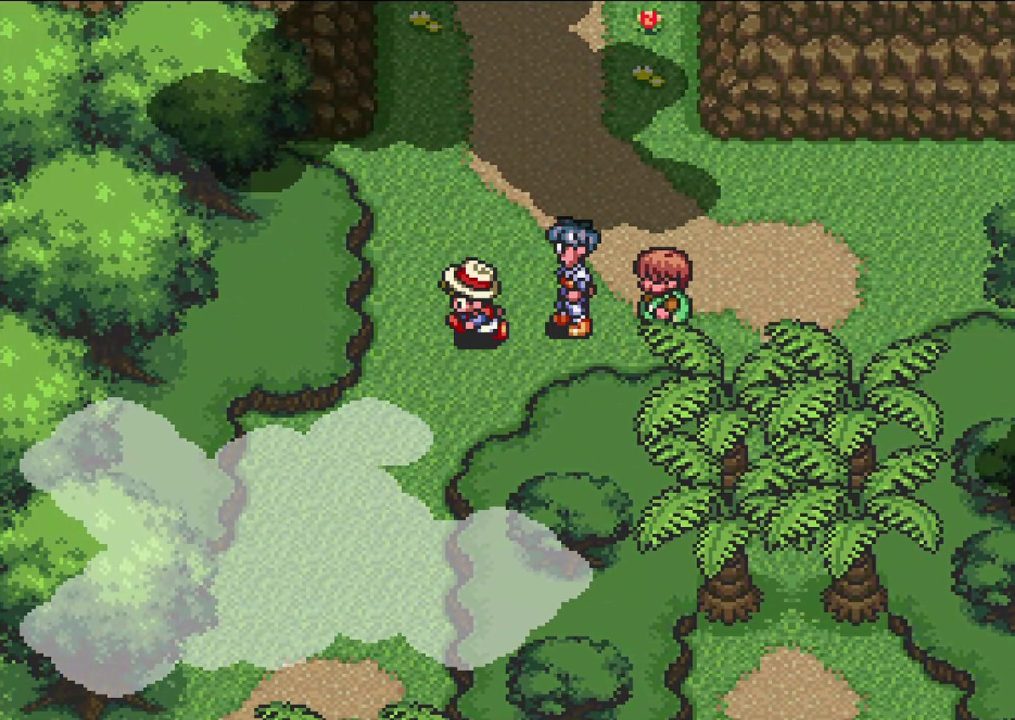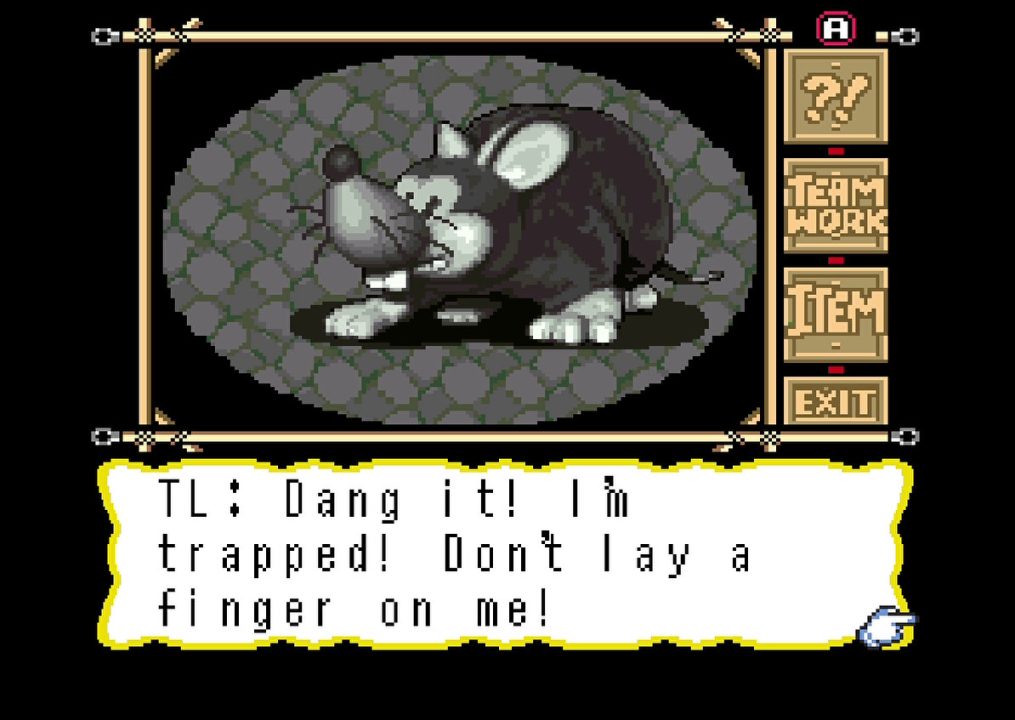There is a strong chance that you have never heard of Marvelous: Another Treasure Island. If you have, you may only know a few key pieces of information. The most familiar piece of trivia is that Marvelous was the first and only game directed by Eiji Aonuma before he began working on The Legend of Zelda: Ocarina of Time. You may also know that the game is said to run a modified version of the A Link to the Past game engine (though this has never been confirmed). Finally, you probably know that Marvelous was a late Super Famicom game that never released outside of Japan.
Sometimes it is difficult to understand why a game isn’t localized, but Marvelous is no mystery. Marvelous is a text-heavy reminiscent of text-based PC adventure games, and it was released months after the Nintendo 64 was already available. Had it been released, Nintendo of America would have been tasked with selling an unusual Super Nintendo game in late 1997 alongside heavy hitters like Star Fox 64 and Goldeneye 007 — and this was not far removed from the commercial failure of Earthbound.
Marvelous was doomed to obscurity, and it was 22 years before an English fan translation arrived. There is a solid adventure to experience, but time has not been kind to the game. Any Zelda fan can see how Marvelous influenced the development of future Zelda games, but the game feels clunky to play today.
So, what is Marvelous? It is difficult to place it in a genre. The moment-to-moment gameplay is similar to a top-down action-adventure game like The Legend of Zelda, but puzzle solving and progressing the story often require entering an investigation mode similar to a point-and-click adventure game.
You play as three boys on a school camping trip on an island reported to contain a hidden pirate’s treasure. Each boy has different skills and obtains different items and abilities throughout the game. Deon is short and fast; he learns to dash and throws baseballs at enemies. Max is chubby and strong; he can push heavy objects and punch and kick enemies. Jack is tall and smart; he can jump and operate robots with a remote control.
In typical fashion, it turns out the three boys are chosen heroes who will find the hidden treasure of Captain Maverick. But the treasure is also pursued by a group of pirates who kidnap your teacher and lock themselves in Captain Maverick’s secret lair. To reopen the lair, you need to collect four crystal balls (which act as keys) hidden on different islands. You find an old pirate boat and go sailing to multiple lands.

The story progression unfolds in five chapters, with each being a different island until the last chapter when you return to the first island. The overarching story is a very basic tale about a pirate’s treasure. I do not think it is particularly engaging and I think the ending is unsatisfying. On the other hand, the mostly self-contained stories on the three islands you sail to are more intriguing. They are not groundbreaking in 2023, but they are nice stories that bring a lot of variety to the game. Each of the three middle chapters follows a similar concept. The crystal balls are hidden on the islands, but someone has found one and is causing trouble. Each time, you meet with townsfolk and help them solve their problems until you finally get your hands on the crystal ball and leave. Along the way, you solve a lot of puzzles and play a lot of minigames; this is the core of the gameplay.
As you progress, you acquire new inventory items that give specific boys new abilities. Switching between the three characters to take advantage of specific abilities is a frequent part of the gameplay. You can blow a whistle to have them all walk together, but it won’t be long before you must separate and send one boy alone to complete a puzzle. The opposite is also true; several puzzles require all three boys to be positioned near the same object to lift or move it.
The ”teamwork” feature where all three boys work together is one of a few places where the game shows its age. These puzzles can be extremely particular about character placement, and since it uses text commands to activate, you will find yourself reading the same text repeatedly as you incorrectly position the boys two or three times for every otherwise simple puzzle.
The same problem also exists for some item use, notably Jack’s robot remote control. Every puzzle using robots requires opening the investigation screen, selecting the robot, opening the item menu, scrolling to the remote control, and then moving the robot with the d-pad until it inevitably hits an obstacle that cancels the action. You then must go through the entire process again to reactivate the robot for another attempt. The final robot puzzle near the end of the game involves making the robot walk across an invisible floor to discover the correct path. It’s not a short path; I had to go through the verbose text commands at least 25 times to solve the puzzle.
The remote-control robot is the most extreme example, but the game is full of situations where you repeat the same commands. Did you just finish a task and run back to talk to an NPC for your reward? Well, you had Deon as your group leader and the reward specifically works for Max, so you have to switch to Max and then read through all the dialogue again. Repeated text is easily the most frustrating part of the game.

Puzzles are where the investigation mode comes into play. Like some point-and-click adventures or visual novels, you can press the A button at any time to activate a cursor and begin clicking points of interest on your screen. When you do, the game enters a new menu where you can interact more closely with an object or character. From this screen, you can give someone an item, activate the teamwork feature for the boys to work together, or interact directly with an object. Interactions range from moving hands on a clock to pressing buttons to switch music tracks in a jukebox or examining x-rays of the boys.
All these interactions are part of puzzle-solving, but they are also small minigames on their own. The majority of the minigames are fun, but some left me very frustrated. There were at least three times when the minigame felt harder than it should have been. One tug-o-war minigame was so difficult for me that I nearly quit playing the game — and all it requires is pressing the A button quickly.
There are also puzzles that do not use the investigation mode. Sometimes the solution is just to run very fast, push an object, or grab something with a fishing pole. These sections use active equipped items and feel much like playing Zelda. Like Zelda, the active items include some weapons used for combat. However, I wish this part had been omitted. Combat only happens occasionally, and that’s a good thing. Combat always feels clunky and unnecessary. There are a few combat sections that use the investigation mode to instead activate a minigame to win a fight, and those are much better than the basic overworld combat.
That brings me to the last topic of clunkiness. The puzzle minigames are generally fun to play, but figuring out exactly what to do or reaching the minigame portions can be tedious. It is not always clear how to progress. This is not uncommon for games from this era, but it does make it less fun to play today. I have played through the game twice now, and even with a basic idea of what was happening, I instead opened a guide for the second half of the game to prevent wasting time wandering around. The last crystal ball is particularly bad about tediousness. One puzzle had me running back and forth between the same place four times. Had I known in advance, I could have left one boy at each end and swapped between them, but I had already done a lot of walking by the time I realized that — and then left the wrong boy behind and needed an ability from someone else and had to walk even more.
Another section of the same chapter told me to get permission from “Guard #5. ”Without a guide, the only way to learn a guard’s number is to talk to all of them across the entire city. When you find #5, he tells you that you actually need to talk to a different guard, who then sends you to a different guard, who then sends you to a different guard. It’s not a puzzle; it’s just a waste of time.
I think the game starts out strong; it’s fun to mess around and figure out what to do next. But by the halfway point, it was wearing my patience thin, and Marvelous was more fun with a guide handy. That’s unfortunate because it’s not a very long game, and the guide made it go even faster.

On a more positive note, the music and the graphics are solid. The soundtrack is full of catchy tunes that I caught myself humming as I played. They don’t match the heights of the great Super NES soundtracks everyone loves, but it’s a good soundtrack that probably deserves more attention. The graphics fit in a similar situation; they are very good but are not the best. In particular, I like the character sprites for the three boys and the detailed drawings when you investigate an object. The environments are animated well and change as you progress.
All of this leaves me with mixed feelings about Marvelous: Another Treasure Island. I think it’s a well-made game that tried to push the limits of what an action-adventure game could be on the Super NES, and it did so in a unique way that influenced future Zelda games (and likely other Nintendo games as well). There were times when I was genuinely having a great time playing, but the experience is dragged down by outdated menus and repetitive text that is frustrating to deal with over 25 years later.
Marvelous deserves better than to be forgotten, but today it is best enjoyed as a historical curiosity. Try out the first few hours and have a first-hand experience of the ideas Nintendo’s developers were experimenting with before future technology allowed them to fully realize their vision.


